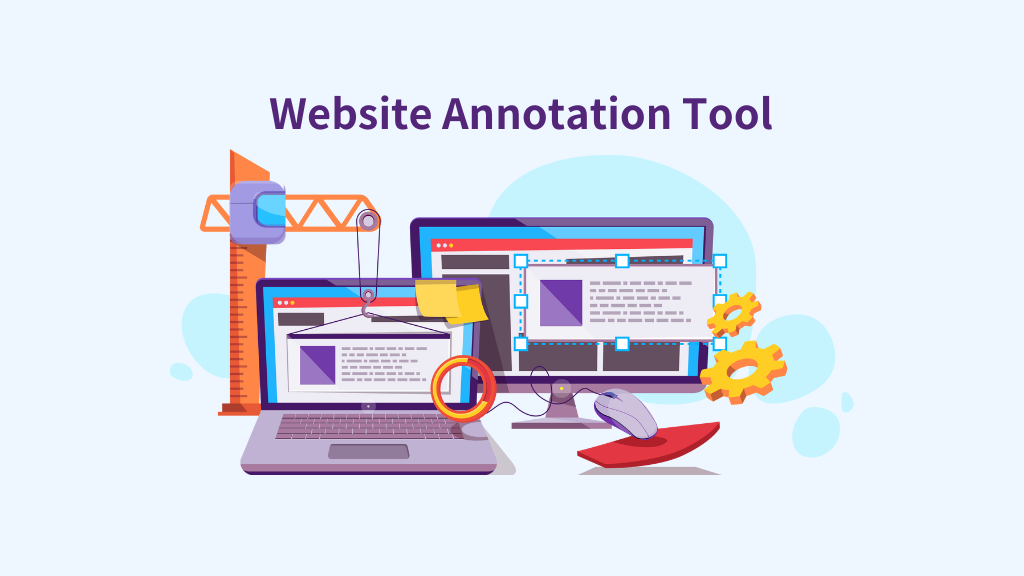
Giving feedback to your team is crucial for the development of the project. It helps keep your team on the right track and everyone updated with the changes and edits. However, this takes a long time and effort if you don’t use a website annotation tool. You will capture the screen, leave your comments, rename each to ensure the sequence is right, save in one folder, and send it to your members.
This can lead your members to miss all your feedback, especially if you send them all in a collaboration tool.
Hence, web annotation is a must-have if your company or team uses online resources, develops websites, or creates designs. Here’s everything you need to know about web annotation tools.
What’s an Annotation Tool?
In school, it is normal to jot down notes, comments, feedback, or reminders when reading textbooks or printed references. For some people, this helps them memorize or remember what the discussion or class is all about. Web annotation uses the same concept but with a more modern approach and the application is broader.
Web annotation is a process where the reader highlights, leaves comments and notes, or emphasizes sections on a live website without editing or touching the CSS/HTML codes. This is very useful for designers, developers, programmers, quality assurance experts, teachers, and all those people who use online resources. However, unlike printed textbooks or notebooks, you can’t leave notes on websites. This is where an annotator tool is practical.
Website annotation tool lets you leave comments, feedback, or suggestions on live websites. This is crucial for keeping your team on track and quality control. You can easily leave comments if you find any errors, problems, or sections that need improvement. The best part about this web annotation tool is only team members or users can access them.
How Does a Web Annotation Tool Work?
A website annotation tool lets the user add, edit, and remove feedback, details, notes, or information from an active website without altering the CSS/HTML codes. What happens is, the image annotation tool adds a layer on top of the website or resource. In this layer, the user can use their instructions which helps the team or company edit, change, or adjust certain features in the website. This layer is only visible to those people who have access to the image annotation tool.
With UI Collabo, all you have to do is enter the website or page you are reviewing. Then, what’s left is to start leaving comments, feedback, and instructions.
There is a space on the right side of your UI Collabo Website Annotation Tool where you can easily highlight and add comments. When you add a comment, it will instantly go to “open”. Your team members will see this and work on it. Once the tasks are done and approved, they will go to “resolved”. If there are no edits needed, the comment will go to “closed”.
Website Annotation Tool: Pros and Cons
Here are the pros and cons of web annotation tools to help you decide if a website annotation tool benefits your team.
Pros:
- User-friendly interface and simple to use
- Offers convenient task management
- Efficient and effective resource management
- Custom or shareable access
- Easily assign tasks or edits to members
- Search feature
- Customizable project notifications
- Quick dashboards to monitor task or project progress
- Third-party application integration
- Can be used in different languages with the help of Google translate
Cons:
- Can’t remove the brand logo
- Can’t export contents of the dashboard or projects
Now you know the advantages and disadvantages of a website annotation tool, it’s time to look for one.
Benefits and Useful Features of Website Annotation Tool
There are multiple applications, uses, and benefits of a website annotation tool, especially for companies like creative agencies, developers, designers, product managers, teachers, students, and remote teams. Here are the benefits of using a web annotation tool:
- Boosts your team’s productivity, efficiency, and morale.
- Improve website design and content through concise and detailed feedback, details, and information.
- Easy team collaboration and communication.
- Decrease unnecessary email exchanges.
- Reduce feedback and information loops.
If you are searching for the best website annotation tool for your team or company, it is best to check the features first. Remember, no two web annotation tools are the same. Take a closer look at the features and check whether your company needs them. Also, some annotation platforms offer free trials or demos. Look for those. It will help you decide if their annotator tool will benefit your company.
In addition, it helps to have a Google translate feature for a website annotation tool, especially if you have remote workers in your team or working with clients from different countries.
Conclusion: Do You Need a Website Annotation Tool?
Each team or company has its own needs. Some teams will benefit from using a website annotation tool while others won’t. It is best to check whether your team is one or the other. To help you decide whether you need to add a web annotation tool to your workflow, here are a few industries that commonly use them:
- Website developers: Communicate and collaborate with clients and developers.
- Remote teams and workers: Exchange ideas and feedback with people from different countries.
- Creative agencies: Improve workflow for quick project turnaround.
- Designers: Enhance design creation and find solutions quicker.
- Teachers and students: Give feedback and apply changes more efficiently.
If your team or company works in these industries, it will greatly benefit you to add a website annotation tool to your workflow. Before purchasing your web annotation tool, always check it first. If you want to know more about collaboration tools and annotator tools, read more information in UI Collabo.



